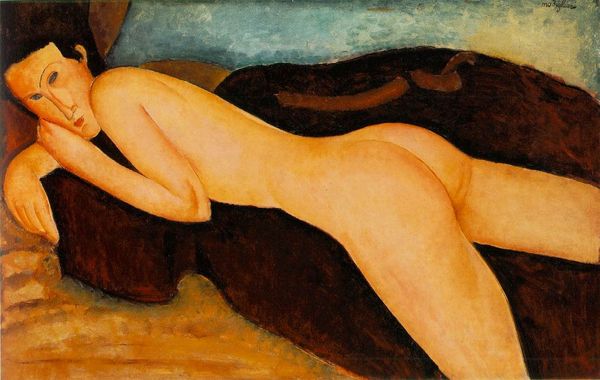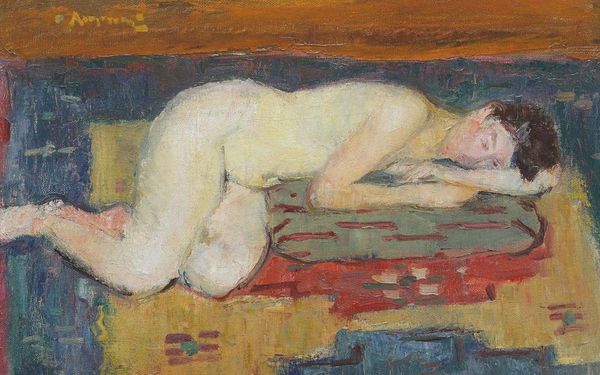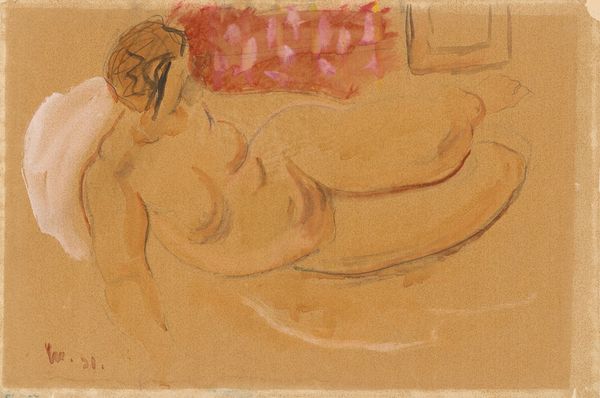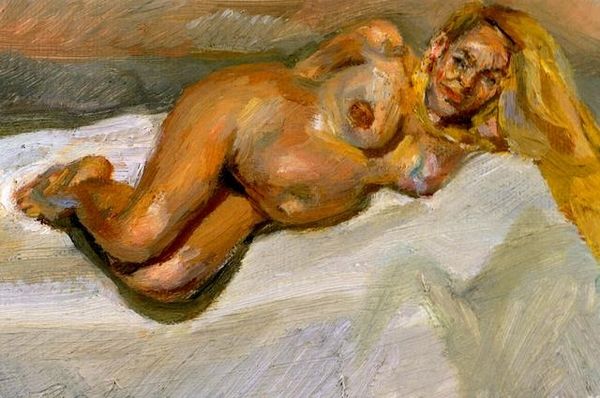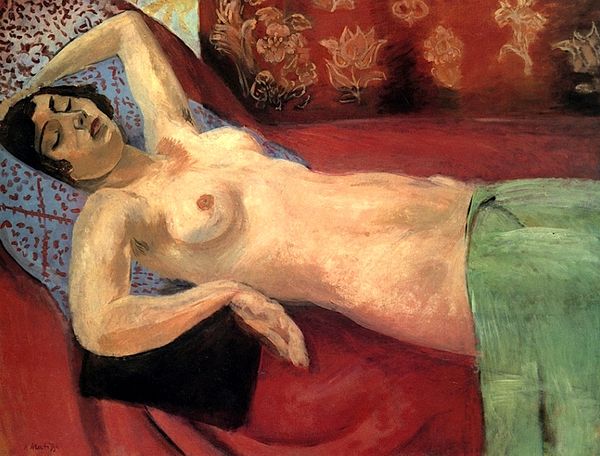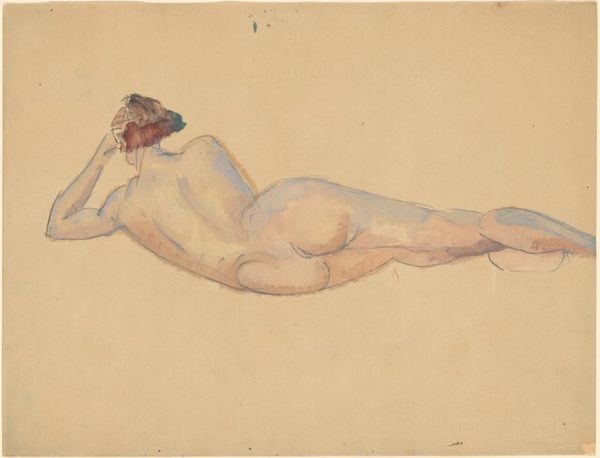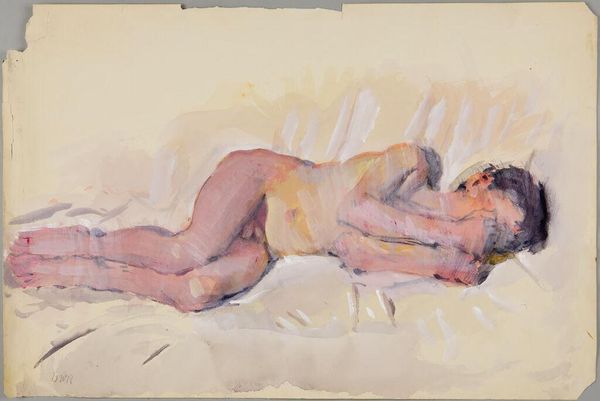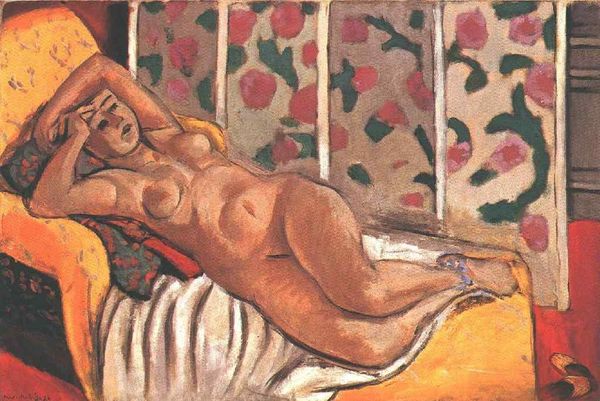
Copyright: Public domain US
Frantisek Kupka painted 'Lying Naked, Gabrielle' in 1906. The image shows a nude woman reclining, and could simply be viewed as an intimate portrait. However, the male gaze and the representation of women within the social structures of early 20th-century Europe are complex. The female nude was a common subject in art, but often depicted women in passive or idealized ways. Painted in France, Kupka challenges the traditional academic style by using a softer approach, contrasting the realism of the body with the abstract background. The painting doesn't appear to comment directly on social structures but invites viewers to consider how women were represented and perceived in art and society at the time. To fully understand the piece, research into the socio-political context of early 20th-century Europe is essential. By analyzing the painting through a historical lens, we can better understand its meaning and significance within its specific social and institutional context.
Comments
No comments
Be the first to comment and join the conversation on the ultimate creative platform.
